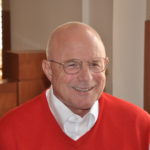The Electronic Courtroom
Judge Arthur M. Monty Ahalt
This Article was first published in the Prince George’s County, Maryland Journal/Newsletter
The cost of technology is dramatically declining as a result of increased use and production creativity. Increased use has also provided proof that operational costs can likewise be dramatically reduced. The time to complete a task has also been shown to be dramatically shortened. It is not uncommon for productivity gains of 40 percent and greater to be shown.
The emerging challenge is to convert those productivity gains to the courtroom and reduce the time of trial — especially in document intensive cases. Very few existing courtrooms are equipped to accommodate the electronic presentation of evidence. In the Circuit Court for Prince George’s County, none of the 21 courtrooms have any significant equipment to facilitate the electronic presentation of evidence. Indeed, in the over 700 jury trials a year in the Circuit Court only a few have used any of the new emerging tools that are rapidly becoming available.
The Circuit Court has already established national and state leadership by pioneering video arraignments from the County detention center and video recording of the record in three courtrooms. Additionally, the 8 courtrooms – hearing rooms in the Marbury wing of the Courthouse have significant aspects of the infrastructure already in place. Several notable examples of the future electronic courtroom are now available to serve as models for the country’s courtrooms. Several electronic courtrooms have existed for over five years in Dallas, Texas; Los Angeles, California; and Phoenix, Arizona. More recently, at least two law schools have undertaken model electronic courtrooms: Courtroom 21, a joint project of the National Center for State Courts and the Law School of the William & Mary College (www.courtroom21.net ) and the Courtroom of the Future located at the University of Arizona School of Law (www.law.arizona.edu ). The Federal Courts have initiated ten high-tech federal courtrooms. Courtroom 9 in the United States District Court in Washington, D.C., serves as one of those high-tech courtrooms.
Courtroom Number 9, U.S. District Judge Thomas Hogan’s courtroom, is a state-of-the-art courtroom costing $120,000. Much of this cost can be attributed to raising the level of the well of the court floor to enable wiring and accommodate ADA compliance. The technology components consist of:
ELMO evidence presentation equipment enables counsel to present evidence to the judge and jury by a video monitor. The evidence can be in any medium such as documents, photographs, negatives, x-rays, 3-D objects, etc. The courtroom clerk has a “kill switch” on the bench that can turn off the entire system if the judge determines that certain images should not be made available to the jury.
Video monitors are placed around the courtroom for the judge, the witness, the courtroom clerk and each counsel table for the display of evidence from the ELMO, the VCR and PCs. The jury box has eight 10″ monitors. One monitor is placed between every two juror chairs. In addition, there is a 37″ monitor just inside the well of the court for the gallery to view anything that is displayed through the system.
Light pens for annotation enable the witnesses and counsel to draw John Madden style point, and highlight on the video monitor itself any evidence or document that is displayed through the system.
Video Cassette Recorder allows playback of evidence through the video monitors. The VCR also contains a freeze-frame feature that allows the operator to slowly advance or freeze an image.
A customized integrated podium holds all of the equipment which includes a light pen for annotation, a bar code pen, the VCR and a small video monitor to provide whoever is at the podium with the ability to see what is actually being transmitted in the courtroom.
Counsel Connection Boxes are located at each counsel table. These boxes enable counsel to plug in a laptop computer and present trial documents and/or evidence through the video system.
A PC Docking Station is on the bench for the judge which enables the judge to plug in a laptop computer (provided with the courtroom) and take notes electronically, view real-time reporting and conduct legal research. At the close of the day or session, the judge can remove the laptop for further use.
Real-Time transcription is used to capture the record. CaseView II, a software product from Stenograph Corporation, enables the record to appear in English on certain video monitors in the courtroom as the court reporter takes the record.
A PictureTel Video Conference system in use for video conferencing.
A Touch-Screen monitor is located at the courtroom clerk’s work space which allows the control of the signal that goes to each monitor within the courtroom.
New Counsel tables with retractable power centers and power spheres enable attorneys to plug in a laptop computer right at the work surface. A PC with DCN connectivity is located at a smaller table for the law clerk.
The price tag for the state-of-the-art electronic courtroom may seem out of reach for a State court. However, Professor Winston Woods, University of Arizona School of Law, provides a cost-effective three-step strategy to introduce electronics into state court courtrooms. A basic system (costing $15,000-$20,000) is composed of: (i) ELMO; (ii) VCR with shutter control; (iii) large screen television; and (iv) computer interface for television. First Level Add-ons would include: (i) multi-unit distribution system; (ii) monitor system; and (iii) amplified sound system. Second-Level Add-ons include: (ii) single input PointMaker; (ii) video tape recording system; and (iii) high-end video document cameras.
The Bar in partnership with the Court should seek creative funding to equip at least two courtrooms with a basic electronic courtroom system. Strategies should be developed for purchase of First Level and Second-Level Add-ons.
by Judge Arthur M. Monty Ahalt – May 1998

